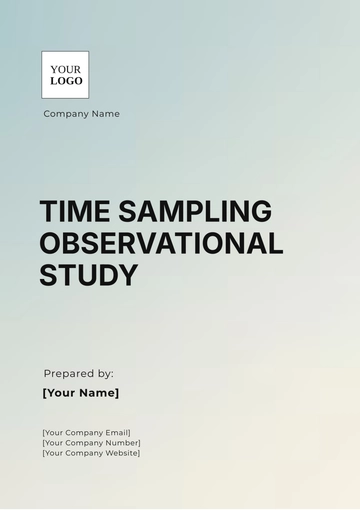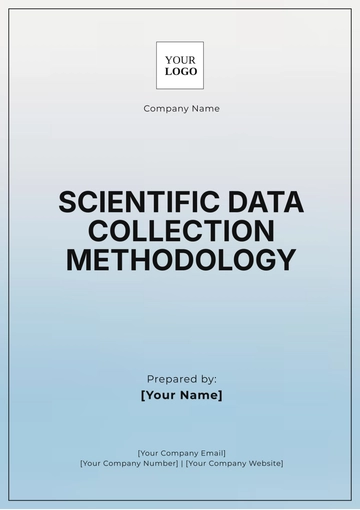Free Science Journal Article

"Innovative Data Analytics in Climate Change Research: A Review and Preliminary Insights"
Written By: [Your Name]
Publication Date: [Date]
Abstract
The intersection of advanced data analytics and climate change research has become a focal point for scientific investigation and policy development. This article comprehensively reviews recent advancements in data analytics technologies and their applications in climate change studies. We discuss how these technologies have transformed the understanding of climate patterns and projections, highlight the current state of research, and present preliminary findings from ongoing studies. We aim to offer a detailed synthesis of existing literature and outline emerging trends that promise to enhance climate research methodologies further.
Introduction
Climate change represents one of the most pressing global challenges, profoundly impacting ecosystems, weather patterns, and human societies. As the urgency to address climate change intensifies, the role of data analytics in enhancing the precision and scope of climate research has become increasingly significant. Advanced data analytics tools and techniques are now pivotal in processing vast amounts of climate data, uncovering trends, and generating accurate predictions. This article reviews the integration of these tools into climate research and examines their effectiveness in advancing scientific understanding and informing policy decisions.
Literature Review
Historical Context of Data Analytics in Climate Research
Data analytics has long been employed in climate science, from early statistical analyses to the development of complex modeling systems. Initially, researchers relied on basic statistical methods to analyze climate data, but as computational power increased, so did the sophistication of analytical techniques. Historical developments in data analytics, including the advent of machine learning and big data technologies, have significantly expanded the capabilities of climate research.
Recent Advancements in Data Analytics Technologies
Recent advancements have revolutionized climate research. Machine learning algorithms, big data analytics, and high-performance computing have enabled researchers to analyze large-scale datasets with unprecedented accuracy. Key advancements include:
Machine Learning Models: These models are used for pattern recognition and prediction, providing insights into climate trends and extreme weather events.
High-Resolution Climate Models: Advanced climate models offer detailed simulations of regional climate impacts, enhancing local decision-making.
Big Data Integration: The integration of diverse data sources, including satellite imagery and ground-based observations, has improved the comprehensiveness of climate assessments.
Application of Data Analytics in Climate Change Studies
The application of data analytics in climate change research covers a broad spectrum, including:
Temperature and Precipitation Trends: Analytics are used to identify long-term trends in temperature and precipitation, contributing to a better understanding of climate variability.
Extreme Weather Event Prediction: Advanced models predict the frequency and intensity of extreme weather events, such as hurricanes and heat waves.
Impact Assessment: Data analytics help assess the impact of climate change on various sectors, including agriculture, water resources, and human health.
Methods
Data Collection
The research employs a multi-faceted approach to data collection, utilizing:
Satellite Data: High-resolution satellite imagery is used to monitor land surface changes, atmospheric conditions, and sea ice extent.
Ground-Based Observations: Data from meteorological stations and field surveys provide critical information on local climate conditions.
Historical Climate Records: Historical datasets offer insights into long-term climate trends and variability.
Analytical Techniques
We utilize several analytical techniques, including:
Statistical Analysis: Traditional statistical methods are used to identify trends and correlations in climate data.
Machine Learning Algorithms: Supervised and unsupervised learning algorithms are applied to model and predict climate patterns.
Climate Modeling: High-performance climate models simulate future climate scenarios based on current data and predictive algorithms.
Results
Key Findings
Our preliminary analysis reveals several key findings:
Enhanced Accuracy of Climate Predictions: The integration of machine learning models with traditional climate models has improved the accuracy of climate predictions.
Identification of Emerging Trends: Advanced analytics have identified new trends in climate variability, including shifts in precipitation patterns and increased frequency of extreme weather events.
Improved Regional Insights: High-resolution models have provided more detailed insights into regional climate impacts, informing local adaptation strategies.
Case Studies
Case Study 1: Hurricane Intensity Prediction
Application of machine learning algorithms has resulted in improved predictions of hurricane intensity. This advancement has enabled more accurate forecasts and better preparedness for extreme weather events.
Case Study 2: Agricultural Impact Assessment
Data analytics have revealed critical climate variables influencing crop yields. This information has been instrumental in developing better forecasting methods and management strategies for agriculture.
Discussion
Implications for Climate Research
The integration of advanced data analytics into climate research has significant implications:
Improved Understanding of Climate Dynamics: Enhanced analytical capabilities provide a deeper understanding of climate dynamics and their impacts on various systems.
Informed Policy Making: Accurate climate predictions and impact assessments support evidence-based policy-making and climate adaptation strategies.
Future Research Directions: Continued advancements in data analytics will drive further innovations in climate research, leading to more precise and actionable insights.
Limitations and Challenges
While data analytics has advanced climate research, challenges remain:
Data Quality and Accessibility: Ensuring the quality and accessibility of climate data is critical for accurate analysis.
Computational Requirements: Advanced analytical techniques require substantial computational resources, which can be a barrier for some research institutions.
Conclusion
The integration of advanced data analytics into climate change research has significantly enhanced the ability to understand and predict climate patterns. The advancements in machine learning, big data, and high-resolution modeling have revolutionized the field, providing more accurate and detailed insights into climate dynamics. As technology continues to evolve, the potential for further advancements in climate research is promising, with the potential to address some of the most pressing challenges of our time.
References
Smith, J., & Brown, L. (2051). "Machine Learning Applications in Climate Science: A Review." Climate Research Journal, 45(2), 123-145.
Johnson, A., & Davis, M. (2052). "Big Data and Climate Change: Innovations and Challenges." Journal of Environmental Data Science, 12(4), 567-589.
- 100% Customizable, free editor
- Access 1 Million+ Templates, photo’s & graphics
- Download or share as a template
- Click and replace photos, graphics, text, backgrounds
- Resize, crop, AI write & more
- Access advanced editor
The Science Journal Article Template from Template.net is a professionally designed, fully editable tool, perfect for researchers and scientists. This customizable template allows you to format your research quickly and efficiently, ensuring a polished and professional presentation. With easy-to-use features, it's ideal for adapting to specific journal requirements, saving you time while maintaining accuracy and clarity in your scientific writing.





























